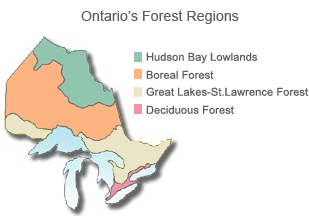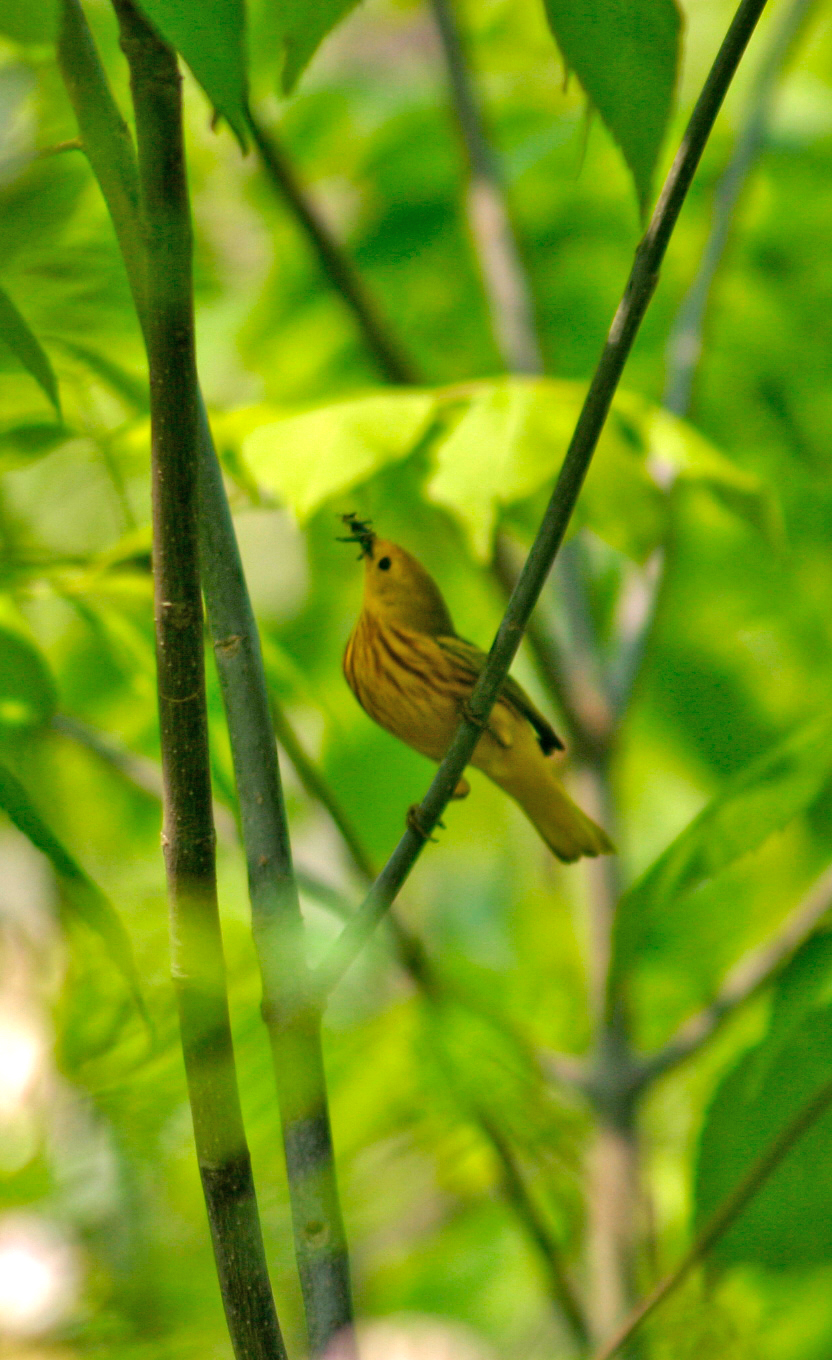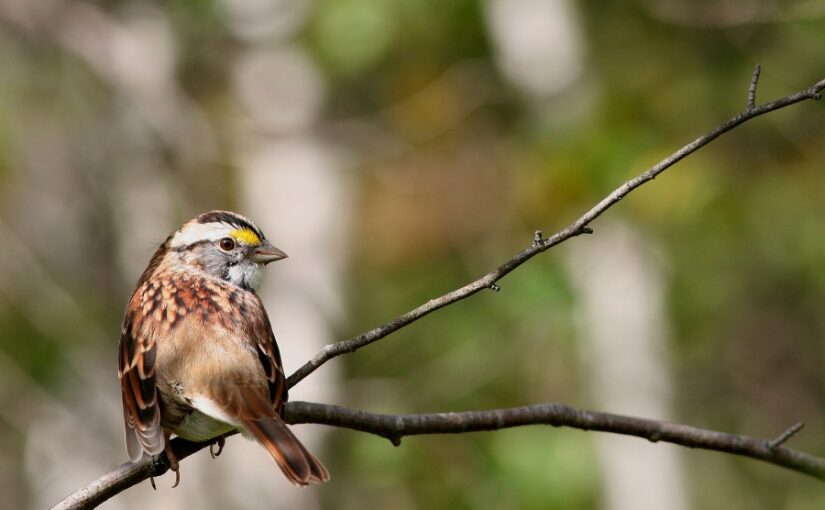Today’s post comes from Sarah Wiebe, the senior park naturalist at Kettle Lakes Provincial Park.
Before this year, I would have never considered myself a “Bird Nerd.”
My journey began in my southern Ontario home, but it wasn’t until I arrived at my summer destination (Kettle Lakes!) that I truly hit my nerdy stride.
Becoming a “Bird Nerd”
Despite growing up visiting Ontario Parks and working as a naturalist for a few years, I only recently got into birding when I set myself the challenge of seeing as many birds as possible in one year.
It started at home, in southern Ontario. There are many good birding spots where you can see several species throughout the winter.

I was able to add lots of birds to my list and even got to explore some unfamiliar places close to my house. I really got excited when I saw my first Snowy Owl, a temporary southern visitor during the winter months!
Eventually, it came time for me to decide what I was going to do for the summer.
When I heard that there was an opening at Kettle Lakes Provincial Park, I jumped at the chance. I was so excited to explore a region of Ontario that I had never been to.
And it turns out that I was following the birds north too!
Migrating north: birding in the boreal
Kettle Lakes is in the boreal forest ecoregion. The Boreal Forest is a vast area across Canada and is known for its Jack Pine, Black Spruce, vast wetlands and, of course, birds!

In Ontario, boreal forest covers 862,000 km² of land (that is about 1.5 times bigger than France) and 15% of Canada’s boreal forest ecosystems.
During the spring, billions of birds migrate from their winter homes in the south, like Central America, to their summer breeding grounds in the boreal forest.
So just like the birds, I migrated from my winter home in the south to my summer home at Kettle Lakes.
A buggy banquet
Before coming to Kettle Lakes, I was warned about how buggy northern Ontario could be in the spring.
But I soon learned that this is what makes it so great for birds!

The boreal forest has an abundance of food like blackflies, moths, and caterpillars.
Many species of birds flock from all over the Americas to raise their young. Around every corner is a bird searching for a snack or a nest of young calling out to be fed!
Imagine walking through the snack aisle at the grocery store and being able to get all your favourite treats — that’s what it’s like for birds in the boreal!
That’s why we say that the boreal forest is North America’s songbird nursery.
Plus, all of these birds help protect the trees from being overwhelmed by bugs, and keep our forests healthy!
A birding bounty
While at the park, I have seen warblers, woodpeckers, and waterfowl.
I’ve been able to see many new species that are only passing through, like Canada Warblers, White-crowned Sparrows, and Yellow-bellied Sapsuckers!
Along one of my favourite trails in the park, the Tamarack Trail, I can see Magnolia Warblers, Blackburnian Warblers, Downy Woodpeckers, and even scaups, a type of duck!

At the end of the summer, I will follow some of the five billion birds, the adults and the young, back south to my winter home.
Though it will be sad to leave my summer home, I know that — like the birds — I will return to northern Ontario again soon.
Interested in discovering the amazing world of birding?
Here’s how to get started:
Download birding apps
eBird is great for seeing what birds are in your area and where to go birding, and helps keep track of which birds you see.

Merlin is a free online bird guide that can help you identify birds by how they look and by how they sound.
Have a picture of a bird and don’t know what it is? Post it to iNaturalist!
Find a pair of binoculars
You’ll be amazed at what a difference they make.
You don’t need an expensive camera or binoculars to bird. There are many affordable binoculars available, and some parks have equipment rental programs where you can borrow a pair.
Stumped?
Post your questions or photos on social media with the hashtag #AskAnOPNaturalist.
We love to hear about your birding adventures, and are happy to help you find out what your mystery bird is!
Now is the best time to start birding. We’re at the start of a multi-year project called the Ontario Breeding Bird Atlas (2021-2025).
The OBBA is a community science project, meaning everyday people can contribute to scientific research. This project aims to map where birds are in Ontario and thier numbers from as far south as Middle Island in Lake Erie all the way to Hudson Bay in the north!
